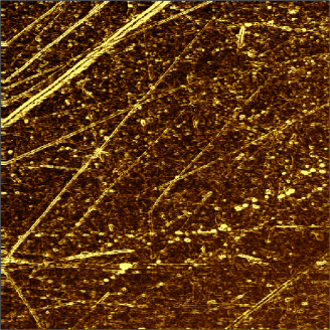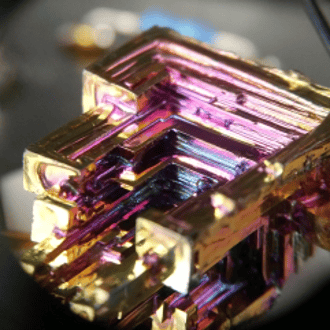Discover the capabilities of WaveMode AFM in characterizing bottlebrush polymers with unprecedented detail and speed, ...

The ultimate tool for nanoscale research from biological molecules to advanced new materials.
The versatile mid-range research AFM that grows with your demands in modes and accessories.
A compact affordable research AFM that is astoundingly easy to use, with more than 30 modes and options.
Fastest reliable sub-Angstrom surface roughness metrology.
Bringing the power of DriveAFM to a wafer metrology system purpose-built for the requirements of the semiconductor industry.
Measure roughness and other material properties of heavy and large samples up to 300 mm and 45 kg.
For unique requirements, we will design a bespoke AFM solution, leveraging our decades of engineering expertise.
Slide an AFM onto your upright optical microscope turret for a leap in resolution.
One of the smallest ever AFMs, created for integration into custom stages or existing setups.
A flexibly mountable research-grade scan head for integration into custom stages or existing set ups.
What is atomic force microscopy (AFM)? How does AFM work? What AFM modes do I really need? How do I get started with AFM?
Learn how AFM works with cantilever/tip assembly interacting with the sample. Explore CleanDrive technology, calibration methods, and feedback principles for precise nanoscale imaging.
An overview of common AFM modes. To learn about each mode in more detail and see application, view the full article.
We regularly publish detailed reviews providing practical guidance and theoretical background on various AFM applications.
Read detailed technical descriptions about selected AFM techniques and learn how to perform specific measurements on Nanosurf instruments.
A library of links to research papers in which Nanosurf instruments were used.
Learn AFM from our library of recorded webinars, covering different measurement techniques, modes, and areas of application.
Short video clips explaining how to perform different operations on Nanosurf instruments.
Watch a product demonstration to learn about the capabilities of our AFMs.
Short videos of our AFMs.
Browse news articles, press releases and a variety of other articles all around Nanosurf
Browse Héctor Corte-Léon's weekly experiments, for inspiration, entertainment, and to discover everyday applications of AFM.
By guest author Angelo Gaitas.
Irene C. Turnbull1,2,*, Angelo Gaitas3
1Cardiovascular Research Institute, Icahn School of Medicine at Mount Sinai, New York, NY 10029, USA.
2The Estelle and Daniel Maggin Department of Neurology, Icahn School of Medicine at Mount Sinai, New York, NY 10029, USA
3BioMedical Engineering & Imaging Institute, Leon and Norma Hess Center for Science and Medicine, New York, NY 10029, USA
Link to publication: Characterizing Induced Pluripotent Stem Cells and Derived Cardiomyocytes: Insights from Nanoscale Mass Measurements and Mechanical Properties
#Done with a FLEX: The most flexible atomic force microscope for materials research
In our recent paper, we leveraged atomic force microscopy (AFM) (FlexAFM (Nanosurf AG, Switzerland)) and FluidFM (Cytosurg AG, Switzerland) to delve into the nanoscale properties of human induced pluripotent stem cells (iPSCs) and their derivatives, cardiomyocytes (iPSC-CMs). Our investigation centered on the nano-mechanical aspects of elasticity and cell mass, which undergo significant changes as iPSCs differentiate into cardiomyocytes. These findings are pivotal, offering a novel method for evaluating the differentiation process of iPSCs into iPSC-CMs, a key area of interest due to their promising applications in cell therapy, drug testing, and understanding cardiac diseases. The differentiation of iPSCs into cardiomyocytes is a complex process, critical for advancing regenerative medicine and personalized medicine approaches. iPSC-CMs, derived from reprogrammed mature cells such as skin cells, hold the potential for heart tissue repair and the development of subject-specific drug testing models. This underscores the importance of precise single-cell level characterization for enhancing the understanding and application of these cells in medical science.

Our research employed two specific AFM techniques to accurately measure the elasticity and mass of individual iPSCs and iPSC-CMs. These measurements are crucial as they reflect the cellular health, growth rate, and the cell's functional state, providing insights into cellular behavior and the differentiation process. For instance, elasticity or stiffness of a cell is intrinsically linked to its cytoskeletal organization, which changes significantly during differentiation, influencing cell functionality and its state of maturation. By using AFM for these measurements, we not only confirmed the significant differences in cell mass and elasticity between undifferentiated iPSCs and differentiated iPSC-CMs but also demonstrated the potential of AFM as a comprehensive tool for single-cell analysis. This marks the first instance where such differences were quantitatively reported, highlighting the effectiveness of AFM in distinguishing between cells pre- and post-differentiation. Furthermore, our study presents the promising integration of fluidic-AFM techniques for mass measurement, opening new avenues for non-invasive cellular analysis. This could potentially be combined with other techniques for extracting genomic content from individual cells, thereby enriching our understanding of iPSC differentiation processes at a granular level.
In conclusion, our research underscores the critical role of nano-mechanical measurements in monitoring iPSC differentiation into cardiomyocytes. The differences in cell mass and elasticity we identified serve as important morphological markers for this process. While our findings are specific to the tested iPSC cell line, they suggest a broader applicability of AFM in cell biology, promising for future studies across various cell types and lines. This work paves the way for more detailed and integrative approaches to studying cell differentiation, enhancing the potential of iPSCs in regenerative medicine and beyond.
To read more:
Determining mass of individual micron-sized particles using PicoBalance and FluidFM® probes

28.10.2025
Discover the capabilities of WaveMode AFM in characterizing bottlebrush polymers with unprecedented detail and speed, ...

27.10.2025
Read this blog and discover advanced alloy engineering and cutting-edge AFM techniques for high-resolution, ...

14.10.2025
Discover how WaveMode technology resolves the tobacco mosaic virus structure under physiological conditions with ...

18.04.2024
FridayAFM: See how one of our Industrial AFMs can be used to look at the surface of mobile phones.

28.03.2024
Explore the world of AFM experiments with bismuth oxide layers in this blog post. Learn about electrical measurements ...

21.03.2024
FridayAFM: Point contact diode on lead sulfide.
Interested in learning more? If you have any questions, please reach out to us, and speak to an AFM expert.
